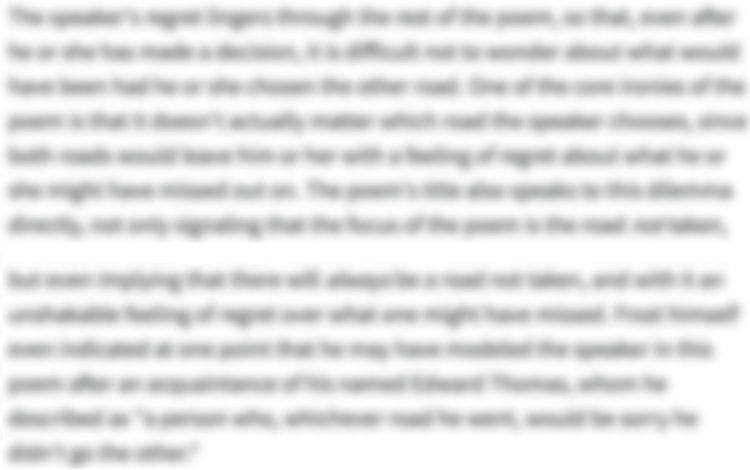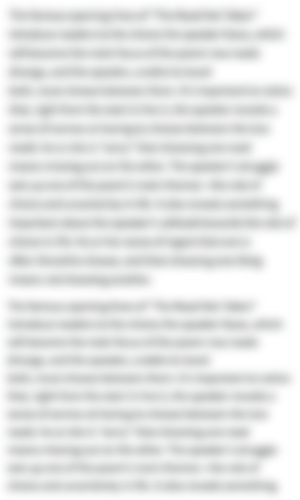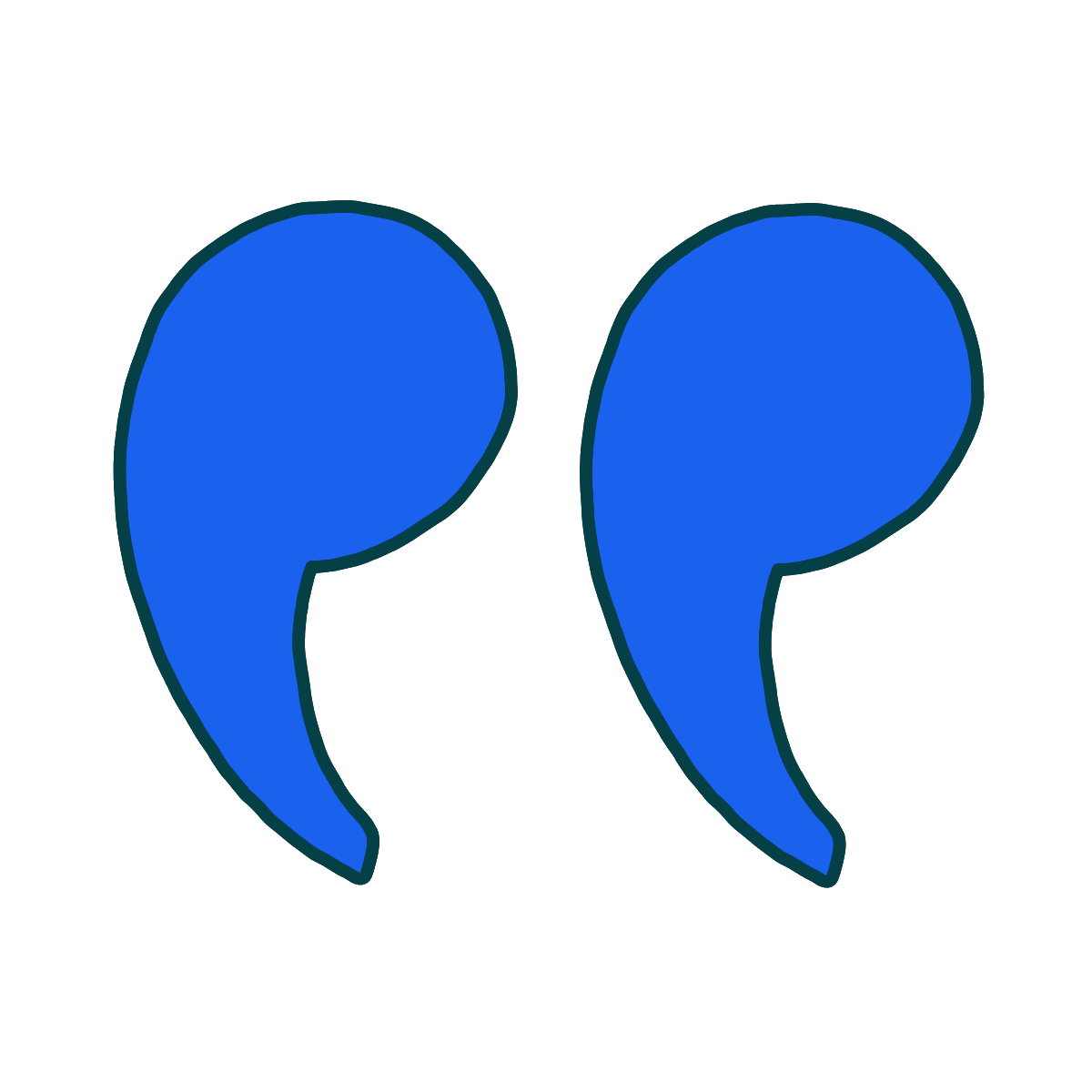-
“Nearing Forty” Introduction
-
Derek Walcott's "Nearing Forty" was first published in his 1969 collection The Gulf and Other Poems, when the poet was indeed nearing 40. The poem can be considered autobiographical, as the speaker frets about aging and worries that his earlier work was "fireless and average." He turns for inspiration to John Figueroa, a man 10 years his senior and an important friend and mentor in his life. Figueroa exemplifies a workmanlike approach to poetry, advising that aging poets can either give into self-doubt or "rise" and "set" their "lines to work," no matter the result.
-
-
“Nearing Forty” Summary
-
"Nearing Forty" is dedicated to poet and educator John Figueroa, a good friend and mentor to Derek Walcott.
The epigraph quotes Samuel Johnson's 18th-century preface to an edition of Shakespeare's plays. Johnson notes that "fanciful invention"—showy creative work—can entertain audiences for a time, because we're all looking for some novelty to spice up our lives. But that novelty quickly wears off, leaving audiences craving art that expresses permanent truths.
The speaker has been unable to sleep since four, hearing the thin, repetitive sound of early-morning rain. The rain reminds him, as it chills his bones, that he's about to turn 40, and that soon his weakening eyesight (and/or imagination) will grow as foggy as a frosty window. Soon the day may come when he'll look back on his writing with the depressing honesty of middle age, and realize that his early promise was a false start, passionless and ordinary.
That would be fair, he suggests, because his friend John Figueroa's work passionately strove to confront everyday reality. Figueroa's style was beyond flashy figurative language, and it expressed itself—however humbly or painfully—in clear, bright lines of poetry. His pages were simple, like taut bedsheets bleaching in the sun under a spurting drainpipe, happy to receive any momentary burst of inspiration.
Figueroa understood early that poetic ambition would prove as brief as a dazzling meteor. The speaker pictures him clumsily lighting a wet match, smiling, accepting the hoarse whistle of a damaged kettle, and accepting that his field of vision is now narrower than the gap between two slats of a window-blind. As his poetic output diminishes like thinning leaves, he'll remember how great pessimism can take root in artists' minds, causing them to judge their life's work bleakly and soberly (as if judging a whole year by end-of-year rainfall). As a naive schoolkid, the speaker would mistakenly call the "convectional" end-of-year rains "conventional."
Alternatively, Figueroa will rise against his cynicism and get to work on his poetry, feeling a bittersweet but reliable excitement, until he can finally sleep properly (or enters the sleep of death). He'll take note of how the imagination declines toward the end. He'll approach his art in a workmanlike, deliberately conventional way, as if he were a "water clerk" measuring the force of gentle rainfall—rainfall influenced by the changing moon, persevering even while seeming to cry.
-
-
“Nearing Forty” Themes
-

Disillusionment and Wisdom in Middle Age
"Nearing Forty" explores the speaker's feelings as he approaches middle age. Forty, the poem suggests, is a landmark year: a moment to reflect on the follies of being young and to acknowledge the dwindling time one has left. For this poem's speaker, whom readers might interpret as Walcott himself, middle age is also marked by growing disillusionment: the older the speaker gets, the more world-weary he becomes and the further he grows from the passion of his youth. Yet the poem argues that there's a kind of wisdom in this process: aging might sap people of their fire and ambition, but it also helps them see the world in a more level-headed and, perhaps, more truthful manner.
The restless speaker is unable to sleep, kept awake by the sound of the "rigidly metred" rain. This rain, like a ticking clock, reminds the speaker that he's constantly getting older. The speaker fears the consequences of aging for both body and mind. He anticipates his "weak / vision thickening to a frosted pane"—that is, his eyesight worsening. He also fears losing the artistic vision, imagination, and "fire" he possessed in his younger days.
But while youth is a time of passion and ambition, the poem suggests that it's also full of self-deception. People start adult life with grand ideas about who or what they might become; it all seems so possible. For the speaker and his friend, fellow poet John Figueroa (to whom the poem is addressed), this youthful fire manifested as ambition like a "searing meteor" and a desire to make great "work." Meteors blaze brilliantly across the sky, and meteor-like talents or works of art can dazzle their audiences for a time. But meteors are rare occurrences and have little to do with the stuff of everyday life (where, the poem suggests, more authentic inspiration awaits). Like the "pleasures of sudden wonder" mentioned in the epigraph, youthful, meteor-like brilliance is impressive but "soon exhausted"—and ultimately inferior to "the stability of truth" that comes with owning up to one's regrets and failures in middle age.
Young people also think they know everything! The speaker recalls mixing up the word "conventional" for "convectional" in his school days. Growing older, paradoxically, teaches people that they don't have it all figured out. Middle age, then, means coming to terms with life's disappointments, reining in the passions of youth, and accepting fewer moments of pure ecstasy in exchange for a steadier sense of happiness. The poem presents this truth as something only aging can teach. Being 40, or thereabouts, brings with it the "bleak modesty of middle age." Growing disillusioned but wiser, the speaker anticipates "the day when I may judge my work [...] as a false dawn, fireless and average." The speaker thus encounters a kind of reckoning, looking back on his younger self with unflinching honesty.
Where this theme appears in the poem:- Lines 1-32
-

Poetry and Inspiration
Derek Walcott's "Nearing Forty" can be read as an ars poetica—a poem commenting on the art of poetry itself. The poem is dedicated to and addresses John Figueroa, Walcott's friend and fellow poet, whom Walcott admires for his ability to draw inspiration from his mundane, everyday surroundings. Walcott's poem declares that Figueroa "bled for / the household truth." The phrase celebrates his passion and sacrifice, along with his sense that "the household truth"—the reality of ordinary, daily life—is no less valuable than grand artistic statements or moments of "sudden wonder."
Figueroa's style was "past metaphor," this poem's speaker says, meaning that he didn't need flowery or startling images to capture this "truth." Instead, his verse was clear, straightforward, and unadorned: "simple, shining lines, in pages stretched / plain as a bleaching bedsheet under a gutter- / ing rainspout." Notice that there's nothing fancy about this image (but that it is a metaphor; the speaker, it seems, has yet to master the style he so admires).
The speaker further declares that Figueroa was "glad for the sputter / of occasional insight." Instead of waiting around for some magnificent flash of inspiration to strike, he would "fumble a damp match and, smiling, settle / for the dry wheezing of a dented kettle." His vision was "narrower than a louvre's gap": the small slit between the horizontal window blinds. Figueroa's work is humble and laser-focused, acutely tuned into the strange magic of the mundane. And this, Walcott's poem insists, makes it truthful and authentic.
Against Figueroa's example, the speaker now sees his earlier work as cold and "fireless," a kind of "false dawn" or false start. Yet he, like Figueroa, can embrace the "sadder joy but steadier elation" of approaching poetry with everyday reality in mind. As the epigraph by Samuel Johnson suggests, the speaker can put aside the "delight" of "fanciful invention" and concentrate on the "stability of truth" found in the world as it is before him. Though imagination might "ebb[]" and flow with age, the speaker simply needs to be present and attentive like his mentor, receptive to the truth and inspiration all around him rather than waiting for grand inspiration to strike. That way, he adds, he'll be like a "water clerk" measuring rainfall: humble, practical-minded, and willing to do the hard but necessary work authentic poetry demands.
Where this theme appears in the poem:- Lines 1-22
- Lines 23-32
-

Self-Doubt and Cynicism
Approaching middle age has made the speaker of "Nearing Forty" (a stand-in for Walcott himself) reassess his life's work. "Watching your leaves thin," the speaker says, can push people to "recall how deep / prodigious cynicism plants its seed, / gauges our seasons by this year's end rain." This metaphor suggests that getting older and watching his remaining years dwindle (or his "leaves" of published poetry seem "thin[ner]" in substance) makes the speaker reflect on his output and legacy. He can't sleep, as anxiety about the "false dawn"—that is, the unfulfilled promise—of his work keeps him awake. The roots of such self-doubt and "cynicism" run "deep," the speaker observes, and can make artists judge their lives according to their creative productivity (figuratively, the "rain" of insights they've gathered by "year's end").
Self-doubt can even grow into something vast and debilitating. Disappointment at feeling like they haven't done enough or that their work doesn't matter could easily demoralize poets like the speaker and Figueroa and prevent them from writing at all. Yet the speaker ultimately presents artists with an implicit choice: wallow in cynicism or "rise and set [their] lines to work," showing up for their job just like any other laborer. "Nearing Forty" thus suggests that even great poets feel doubt about their work from time to time; self-doubt is universal, and it's easy to let it fester. It's harder—but also more rewarding—to simply get up, put pen to paper (or fingers to keyboard), and steadily work through these difficulties.
Where this theme appears in the poem:- Lines 6-8
- Lines 15-24
- Lines 25-32
-
-
Line-by-Line Explanation & Analysis of “Nearing Forty”
-
Before Line 1, Lines 1-5
(for John Figueroa) ...
... a frosted pane,"Nearing Forty" features a dedication and an epigraph before the main text. The poem is "for John Figueroa," a friend, fellow poet, and important mentor in Walcott's life. Throughout much of the poem, the speaker seems to address him directly.
The epigraph comes from Samuel Johnson, one of the major critics and poets of the 18th century. It appears in Johnson's preface to Shakespeare's collected works, which praises Shakespeare for writing authentically about life as it is—"hold[ing] up to his readers a faithful mirror of manners and of life." From the epigraph on, then, the poem contrasts writing that indulges in "fanciful invention" with writing that confronts the truth. The speaker, now approaching middle age, goes on to describe a kind of split between his earlier style—which was full of "fanciful invention"—and his newfound appreciation for humble, hard-won honesty.
The poem itself opens with the speaker unable to sleep. He's been "Insomniac since four," which could mean either that he's had trouble sleeping since he was four years old or that he's been awake since 4 A.M. Either way, he's anxious. The combination of insomnia and approaching middle age has troubled his mind. He describes the rain outside as "early-rising" (occurring early in the morning) and "rigidly metred": that is, its rhythmic, repetitive sound reminds him of metrical poetry.
Already, then, it seems the speaker is a version of Walcott himself. As the rain's "coolness numbs the marrow"—chills his bones—it reminds him that he's "nearing forty." It seems that the rain's temperature evokes the chilly reality of age and death, while its tempo, like a ticking clock, evokes the passage of time.
In lines 4-5, the speaker imagines how growing older will bring him "nearer [to] the weak / vision thickening to a frosted pane." This metaphor refers to the effects of aging and can be read in two ways. As people age, their sight can worsen and even fail: the clear window "panes" of the eyes might turn cloudy or opaque. But the speaker is also referring to the inner vision or imagination, which poets depend on for their work. The speaker worries that aging will sap the imaginative vigor of his poetry, diminishing its quality.
These opening lines also establish the form of "Nearing Forty." The poem uses rhyme (e.g., "narrow"/"marrow" in lines 1 and 3), but never settles into a consistent rhyme scheme. Likewise, it establishes a meter (iambic pentameter), but this meter loosens a bit rather than remaining "rigid[]" as the poem continues. Finally, the poem consists of a single meandering sentence!
All of these formal choices reflect the speaker's restlessness. He longs for a sense of resolution—much as one line-ending word might seek a rhyming partner—but he never quite finds it or settles into any kind of steady pattern. Frequent enjambment, as in lines 2-3 and 4-5 ("rain / recounting"; "weak / vision"), makes the poem's flow even more unpredictable.
-
Lines 6-8
nearer the day ...
... fireless and average,

Unlock all 214 words of this analysis of Lines 6-8 of “Nearing Forty,” and get the Line-by-Line Analysis for every poem we cover.
Plus so much more...
Get LitCharts A+ -
Lines 9-15
which would be ...
... of occasional insight; -
Lines 15-19
you who foresaw ...
... a louvre's gap, -
Lines 20-24
then, watching your ...
... conventional for convectional; -
Lines 25-27
or you will ...
... can really sleep, -
Lines 28-32
measuring how imagination ...
... seems to weep.
-
-
“Nearing Forty” Symbols
-

Rain
"Nearing Forty" opens and closes with rain. Due to the speaker's anxious state—his 40th birthday looms on the horizon—the rain not only establishes a melancholy atmosphere but takes on symbolic qualities.
First, there's the sound. It beats thinly on the ground with a regularity that the speaker describes as "rigidly metred." This stiff, marching rhythm is almost like a metronome or a ticking clock, reminding the speaker that time is steadily passing. Each drop is like another moment lost.
Then there's the way the rain seems to chill the bones ("its coolness numbs the marrow"). It gets under the speaker's skin in both a literal and a metaphorical sense, perhaps foreshadowing the cold reality of death.
Lines 12-15 pick up on the "rigidly metred" quality of the rain, giving it a more positive spin. Here, rain seems to represent poetic inspiration, which collects on a poet's "pages" as though they were a "bedsheet" under a "rainspout" (drainpipe). That inspiration may slow to a "sputter[ing]" trickle with time, but a good poet never stops waiting for it. Later, lines 22-24 suggest that poets judge their whole lives ("gauge[] our seasons") on the basis of their creative output, again symbolized by "rain."
The ending of the poem echoes the same idea. If the speaker is to be a good poet going forward, he feels he needs to be more like a "water clerk": a humble official who "weighs the force" of the rainfall. The rain still corresponds to the speaker's melancholy mood (he depicts it as "weep[ing]"). But it also stands in, again, for poetic inspiration: it's out there, waiting for someone to capture it and communicate its power to others.
Where this symbol appears in the poem:- Lines 1-4: “hearing this narrow, / rigidly metred, early-rising rain / recounting, as its coolness numbs the marrow, / that I am nearing forty”
- Lines 12-15: “in pages stretched / plain as a bleaching bedsheet under a gutter- / ing rainspout, glad for the sputter / of occasional insight;”
- Lines 22-24: “gauges our seasons by this year's end rain / which, as greenhorns at school, we'd / call conventional for convectional;”
- Lines 29-32: “conventional as any water clerk / who weighs the force of lightly falling rain, / which, as the new moon moves it, does its work / even when it seems to weep.”
-

The Damp Match
Think about the kind of language people often use to describe poetic creativity: fire, brilliance, flashes of insight, etc. Through its portrait of the poet John Figueroa, "Nearing Forty" challenges those familiar ideas, finding inspiration in a more daily, "household" approach to writing.
The speaker imagines Figueroa, who is getting on in years, "fumbl[ing] a damp match" in order to light his stove. The match—which, though wet, can start a fire—seems to symbolize poetic inspiration, especially as experienced by an older writer. Gone are the youthful days of blazing ambition (which line 16 compares to a "searing meteor"). In its place comes something less dazzling, more mundane, but, the poem implies, more authentic. Figueroa's fumbling with the match may represent a struggle to find inspiration or get started on his work. It might also suggest artistic clumsiness or imprecision—the kind even the most masterful artists struggle to overcome.
The "damp match" is a humble little object, yet it's practical and it gets the job done. Figueroa manages to light the stove with it and heat up his "kettle." In this way, it corresponds with Figueroa's devotion to humble "household truth," which allows him to complete his poems.
Where this symbol appears in the poem:- Lines 15-18: “you who foresaw / ambition as a searing meteor / will fumble a damp match and, smiling, settle / for the dry wheezing of a dented kettle,”
-
-
“Nearing Forty” Poetic Devices & Figurative Language
-
Alliteration
The poem's heavy alliteration helps reinforce its imagery and link important words and concepts together. In lines 2-3, for example, alliteration captures the insistent pounding of the rain:
Insomniac since four, hearing this narrow,
rigidly metred, early-rising rain
recounting, as its coolness numbs the marrow,The /r/ sounds impose themselves on the reader's ear, much as the falling rain demands the speaker's attention.
In line 7, the speaker imagines that turning 40 brings a kind of reckoning with oneself. He calls this the "bleak modesty of middle age" (line 7). Growing older, in other words, makes you humble, stripping away the delusions of youth. The /m/ here connects "middle age" with that newly "modest[]" attitude.
In the following line, the speaker anticipates that he'll judge his work "as a false dawn, fireless and average[.]" Here, the fricative /f/ sounds highlight the negative qualities of the speaker's work; their harsh sound seems to convey some of his frustration.
The speaker turns his attention to his friend and fellow poet, John Figueroa. In lines 25-26, he imagines Figueroa facing middle/old age with quiet dignity, turning up daily for the difficult work of writing poetry:
[...] or you will rise and set your lines to work
with sadder joy but steadier elation,Those sibilant /s/ sounds give the lines a whispery quality, hinting at the subdued life of middle or older age. They also give the lines themselves a "stead[y]" sonic consistency.
The speaker then compares this older and wiser type of poet to a "water clerk," or administrator measuring rainfall. Strong alliteration brings this simile to life:
[...] conventional as any water clerk
who weighs the force of lightly falling rain,
which, as the new moon moves it, does its work
even when it seems to weep. (lines 29-32)Again, the repeating sounds (including the many soft /w/ sounds) reflect the image of steady rain. These sounds also lend extra "force" or emphasis to a passage about force—including the force of rainfall, the gravitational force of the "moon," and the emotional force of writing as a vocation.
Where alliteration appears in the poem:- Line 2: “rigidly,” “rising,” “rain”
- Line 3: “recounting,” “numbs”
- Line 4: “nearing,” “nearer”
- Line 7: “modesty,” “middle”
- Line 8: “false,” “fireless”
- Line 9: “which would”
- Line 12: “pages”
- Line 13: “plain,” “bleaching bedsheet”
- Line 17: “smiling, settle”
- Line 18: “dry,” “dented”
- Line 20: “then,” “thin”
- Line 21: “prodigious,” “plants”
- Line 24: “call conventional,” “convectional”
- Line 25: “set”
- Line 26: “sadder,” “steadier”
- Line 29: “conventional,” “water,” “clerk”
- Line 30: “weighs,” “force,” “falling”
- Line 31: “moon moves,” “work”
- Line 32: “when,” “weep”
-
Enjambment


Unlock all 275 words of this analysis of Enjambment in “Nearing Forty,” and get the poetic device analyses for every poem we cover.
Plus so much more...
Get LitCharts A+ -
Imagery
-
Metaphor
-
-
“Nearing Forty” Vocabulary
Select any word below to get its definition in the context of the poem. The words are listed in the order in which they appear in the poem.
- Insomniac
- Rigidly metred
- Numbs the marrow
- Pane
- False dawn
- Just
- Bleaching
- Insight
- Searing
- Fumble
- Wheezing
- Louvre's gap
- Prodigious cynicism
- Gauges
- Greenhorns
- Convectional
- Elation
- Ebbs
- Water clerk
Insomniac-
(Location in poem: Line 1: “Insomniac since four,”)
Unable to sleep.
-
Form, Meter, & Rhyme Scheme of “Nearing Forty”
-
Form
"Nearing Forty" is one long 32-line stanza. The lack of stanza breaks reflects the speaker's state of mind. These aren't meant to come across as well-organized thoughts, but rather as the slightly meandering worries of a speaker who can't sleep. Heavy enjambment makes the poem feel even more disjointed and anxious.
Notice how the poem both starts and ends with rain. This circularity suggests the way the speaker's thoughts keep looping back on themselves, as he wonders what it means to turn 40 and how middle age will affect his work.
"Nearing Forty" also features both a dedication and an epigraph. The dedication foregrounds John Figueroa, Walcott's friend and fellow poet, and defines the "you" whom the speaker addresses throughout. The epigraph comes from Samuel Johnson's 1765 preface to an edition of Shakespeare's complete works. It distinguishes between "fanciful invention" and "the stability of truth" in art—that is, between art that's all razzle-dazzle and art like Figueroa's, which is plain, authentic, and honest. This distinction sets up the poem's exploration of different attitudes toward the creative process.
-
Meter
"Nearing Forty" uses a very loose iambic pentameter, meaning that it generally contains five metrical feet per line, each with an unstressed-stressed syllable pattern. But most lines feature some variation in the meter; the resulting, unsettled rhythm reflects the speaker's restless state of mind.
The meter is most simple and stable when the poet is discussing simplicity and stability. In the first half of the poem, for instance, line 12 is one of the few examples of perfect iambic pentameter:
in simp- | le, shin- | ing lines, | in pag- | es stretched
It's no coincidence that the meter tightens up here. The speaker is praising John Figueroa's poetry for its plainspoken honesty; the steady rhythm of this line effectively mirrors Figueroa's steady hand.
The same regularity shows up in line 30, which depicts the poet as a kind of humble "clerk" (rather than some grand genius):
who weighs | the force | of light- | ly fall- | ing rain [...]
The speaker sees this clerk figure as a model of how to write as he gets older. The consistent iambs here not only reflect the rhythm of "rain[fall]" but also hint at a steady, workmanlike approach to poetry.
-
Rhyme Scheme
"Nearing Forty" contains many rhymes but no consistent rhyme scheme. In the early lines, it looks as though the poem is setting up a pattern—ABACBC, etc.—but it's soon clear that there's no pattern at all.
These choices make sense given the poem's themes. As the speaker approaches age 40, he's trying to sort out who he is. He's anxiously searching for meaning and purpose—and the poem's rhymes seem to be doing something similar. Each end-word looks for the reassuring click of a rhyming counterpart, but the rhymes remain unpredictable throughout. Moreover, some of the rhymes are exact (like "narrow" and "marrow"), while others are slant (like "weak" and "work"). These variations keep the reader in a state of uncertainty, just like the speaker himself.
-
-
“Nearing Forty” Speaker
-
Many clues suggest that the poem is autobiographical. Walcott's speaker is a poet nearing age 40, a friend and admirer of John Figueroa—and Walcott himself was all of those things when he wrote "Nearing Forty." The speaker, then, seems to be the poet himself.
The approaching milestone of forty puts the speaker in a restless, agitated state. His lines meander down the page in a single, heavily enjambed stanza, a form that seems to reflect his troubled mindset.
The speaker fears that his earlier work was a false start or "false dawn" (line 8)—bright and promising, but inauthentic. Though this possibility troubles him, he sees a way forward in the figure of Figueroa, to whom he addresses the poem. Figueroa seems to take a less brash, more workmanlike approach to his art. He has metaphorically "bled for / the household truth" (lines 9-10)—that is, devoted his life to capturing everyday, relatable reality. (His art offers the kind of "stability of truth" that, as the poem's epigraph notes, Samuel Johnson perceived in Shakespeare.)
The poem implies that Walcott will use Figueroa as a model for his own poetry in middle age. Now that the metaphorical "fire" of his youth has fizzled out, the speaker, following Figueroa, will work more like a humble "water clerk" measuring rainfall (lines 29-30). That is, he'll show up to the job each day and faithfully record whatever comes.
-
-
“Nearing Forty” Setting
-
"Nearing Forty" is set early in the morning after a restless night (the speaker has been "Insomniac since four"). The speaker doesn't specify a physical setting, but he seems to be alone: the poem conveys the restless thoughts of his worried mind. As the title suggests, he's nearing age 40 (the poem was published when Walcott himself was 39). Approaching middle age provokes him to reconsider his life and work.
He is writing indoors during a rainstorm: the poem starts and ends with references to rain. The "rigidly metred" sound of rainfall seems to evoke the passage of time, like the ticking of a clock. The speaker also mentions that the rain is "convectional"—or, as he mistakenly called it in his school days, "conventional." This detail might refer to the convectional (convective) storms Walcott would have experienced "seasonal[ly]" in the tropical climate of his native Saint Lucia. In other words, Walcott may be writing in his home country and recalling his childhood there.
-
-
Literary and Historical Context of “Nearing Forty”
Literary Context
Derek Walcott (1930-2017) was born and raised on the Caribbean island of Saint Lucia, the country where much of his writing is set. Critics have praised his body of work as a landmark of postcolonial literature. One of the most decorated poets of the 20th and early 21st centuries, Walcott received the Nobel Prize for Literature in 1992, with the prize committee citing his "historical vision, the outcome of a multicultural commitment."
Walcott was a talented and committed student of literature, publishing poetry from an early age. His first major publication was In a Green Night: Poems 1948-1960, which appeared in 1962. That collection, and Walcott's subsequent work, was very well received. And yet, as "Nearing Forty" suggests, praise and accolades offer little relief from the self-doubt that assails an aging artist. It's fair to think of this poem as autobiographical: Walcott was in fact nearing forty when he wrote it, and he counted the Jamaican poet John Figueroa (1920-1999), the poem's dedicatee, as a key figure in his life. The poem was published in Walcott's collection The Gulf and Other Poems (1969).
In a 1985 interview with The Paris Review, Walcott articulated the same fears about middle age as those on display in the poem: "You’re aware of the fact that you have reached a certain stage in your life. You’re also aware that you have failed your imagination to some degree, your ambitions. This is an amazingly difficult time for me. I’m absolutely terrified."
Historical Context
Unlike much of Walcott's work, "Nearing Forty" doesn't engage deeply with historical themes or conjure up a specific cultural context. Its language and imagery are fairly timeless, and its setting is invoked only indirectly. The poem most likely takes place in Walcott's native Saint Lucia, the island country where he went to "school" (and apparently learned about "convectional" rains, which occur "seasonal[ly]" in tropical climates).
Hailing from the Caribbean but instilled with a deep love of English literature, Walcott often explored themes of postcolonialism, identity, power, and politics. His 1970 play Dream on Monkey Mountain was a major success, exploring "the condition of the colonized natives under the oppressive forces of the powerful colonizers." In 1967, Saint Lucia became an "Associate State," no longer fully beholden to Great Britain but not yet fully independent—a status the country eventually acquired in 1979.
"Nearing Forty" is dedicated to John Figueroa, a Jamaican poet and educator who was ten years Walcott's senior. The two men had a close bond and, as the poem makes clear, Walcott admired Figueroa's dedication to directness and truth. Figueroa published some key studies of Walcott's poetry and was an important figure in the development of Anglophone Caribbean literature.
-
More “Nearing Forty” Resources
-
External Resources
-
Walcott Remembered — Read Walcott's 2017 obituary in the New York Times, which quotes his metaphor comparing history itself to an "insomniac night."
-
A Walcott Documentary — Watch a short film about Walcott and his twin brother, Roderick (also a writer and artist).
-
The Poet's Biography — Read about Derek Walcott's life and work at the Poetry Foundation.
-
The Poet as Nobel Laureate — Read a biography of Derek Walcott, his citation for the 1992 Nobel Prize in Literature, and his Nobel lecture.
-
An Interview with Walcott — Listen to the poet discuss his life and work.
-
-
LitCharts on Other Poems by Derek Walcott
-








